How to Get Rid of Flying Termites in House Naturally: My Secrets
Dealing with flying termites, or swarmers, in my house can be frustrating, especially when they are in the air and on the surface, despite using termiticide. I used to think that chemical solutions and termite traps were the only way to tackle these pests, but now I know about effective termite killer methods for termite elimination, especially targeting lone flying termites. But I discovered natural methods, like a homemade termite killing solution, that are just as effective for termites treatment, if not better.
These methods not only help get rid of flying termites but also keep my home safe from harmful chemicals. I’ll share some simple, eco-friendly tips that anyone can use. Whether you want to protect your home from termites treatment or save money, these strategies will work for you. Let’s dive into how to get rid of flying termites in your house naturally and reclaim your space without stress.
Key Takeaways
- Identify flying termites by looking for their long wings and body shape; this helps you know what you are dealing with.
- Recognize termite swarming, which usually happens in warm months when they fly, to take quick action before they infest your home.
- Differentiate termites from ants by noting that termites have straight antennae and a uniform body, while ants have bent antennae, a pinched waist, and may fly.
- Use natural methods like homemade sprays made from vinegar and water to eliminate termites without harmful chemicals, fly.
- Set up natural traps using cardboard to attract and capture termites and fly, making it easier to monitor their presence.
- Prevent future infestations by maintaining regular inspections of your home and sealing any cracks or gaps where termites could enter.
Identify Flying Termites

Physical Characteristics
Flying termites have distinct physical traits. Their straight antennae set them apart from flying ants, which have bent antennae. Winged termites possess a uniform body shape. They usually measure about 3/8 to 1/2 inch long. Their wings are longer than their bodies and are equal in size to fly.
I remember the first time I spotted these pests, like a fly, around my home. I noticed their unique features right away. It helped me confirm they were not just ordinary flying insects.
Swarming Season
The swarming season for flying termites typically occurs during warm months. This often happens in late spring or early summer. Conditions must be humid for swarming to take place. During this time, you may see large groups of winged termites outside your home.
It’s common to find them near light sources at night. They are drawn to bright lights, making it easier to spot them. Observing this behavior can help you identify potential infestations early on.
Signs of Activity
Look for signs of termite activity around your house. Discarded wings are a clear indicator that termites have been present. These wings often appear near windows or doors where swarming has occurred.
Mud tubes are another sign of termite infestations. These tubes provide shelter for termites as they travel between their nest and food sources. You may find them along foundation walls or in crawl spaces.
I once discovered some mud tubes while inspecting my basement. It was alarming but also helpful in understanding the extent of the problem.
Types of Termites
Different species of termites exist, but not all cause damage. Some types focus on decaying wood, while others target live trees and structures in homes. Destructive termites, such as the Eastern subterranean termite, can cause significant damage to wooden structures.
Understanding the types of termites helps in identifying the specific threats to your home. Knowing which species is present allows for more effective control methods.
Termite Inspection
Conducting a thorough termite inspection is crucial for identifying infestations early. Check areas where wood meets soil and inspect any wooden furniture for signs of damage. Look for small holes or tunnels that indicate active termites.
Regular inspections can prevent extensive damage to your property. If you notice any signs, consider consulting a professional for assistance.
Recognize Termite Swarming
Swarming Phase
Swarming is a reproductive phase for termites. During this time, winged termite swarmers leave their colony to mate and establish new colonies. This behavior usually occurs in the spring or early summer. The presence of swarmers indicates a potential infestation nearby.
I remember the first time I saw flying termites in my house. It was alarming. I quickly realized that it meant I needed to take action.
Trigger Conditions
Temperature changes and moisture levels often trigger termite swarms. Warm weather and humidity create ideal conditions for these insects. Subterranean termite infestations commonly occur in areas with high moisture. Homeowners should pay attention to these environmental factors.
In my experience, keeping track of seasonal weather changes helped me anticipate swarming events. It’s essential to monitor your home during these times.
Monitoring Swarms
Monitoring the number of swarms is crucial. Multiple occurrences may signal a larger colony nearby. If you notice several swarms within a short period, it could indicate a widespread termite infestation.
I found it helpful to document each sighting. This way, I could see patterns over time and act quickly if needed.
Identifying Winged Termite Swarmer
Identifying winged termite swarmers can help determine the type of infestation. These insects have straight antennae and two pairs of wings that are equal in size. They are often confused with flying ants but have distinct features.
If you spot any flying termites, compare them with images online or consult an expert for confirmation. Accurate identification can guide your next steps in pest control.
Signs of Infestation
Signs of a termite colony include discarded wings near windows or doors. You may also find mud tubes along walls or foundations. These signs suggest that swarming termites have established a colony close to your home.
Taking immediate action can prevent further damage. Ignoring these signs might lead to costly repairs down the line.
Natural Remedies
Using natural remedies can help manage swarming termites effectively. Essential oils like orange oil and neem oil are known for their repellent properties. Spraying these oils around entry points may deter swarmers from entering your home.
I’ve tried using orange oil myself, and it seemed to reduce the number of insects I encountered.
Differentiate Termites from Ants
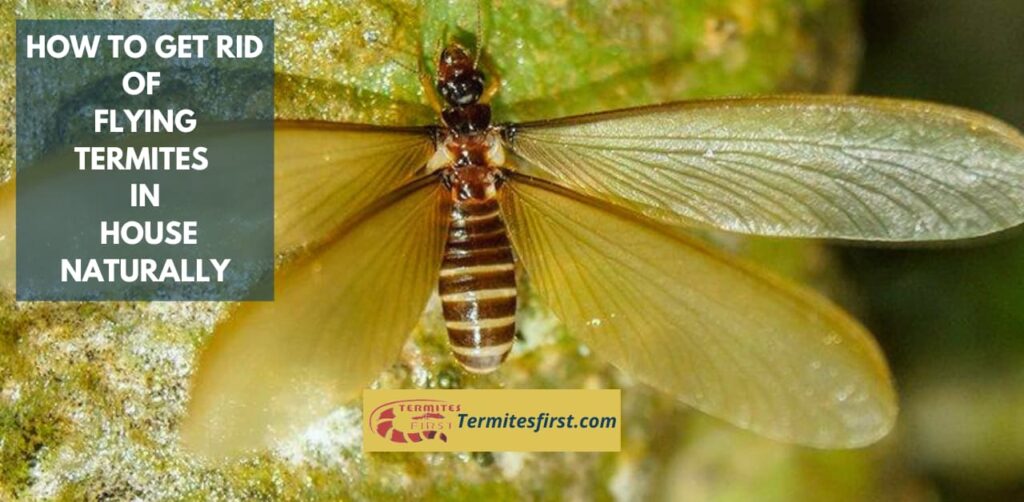
Body Structure
Termites and ants have distinct body shapes. Termites feature a broad waist, which makes them look more robust. In contrast, ants possess a pinched waist, giving them a slimmer appearance. This difference is often the first clue when identifying these insects.
I remember seeing both types of insects in my backyard. The termites looked thicker, almost like little tanks, while the ants were slender and quick. Observing their shapes helped me understand how to differentiate them better.
Wing Characteristics
The wings of termites and ants also differ significantly. Termite wings are all the same length. This uniformity makes them easy to spot during swarming events. On the other hand, ant wings come in different sizes. The front wings are larger than the back ones.
When I first noticed swarming insects near my house, I checked their wings closely. It was clear that the termite wings were equal in size, while the ants had a noticeable size difference among their wings. This detail can help anyone identify which insect they are dealing with.
Behavior Patterns
Behavior sets termites apart from ants as well. Termites tend to swarm in large groups. They do this mainly during specific seasons, usually in warmer months when conditions are right. Their swarms can be quite overwhelming if they invade your space.
Ants, however, are generally more solitary creatures. They form colonies but do not swarm in large numbers like termites do. Most of the time, I see ants working alone or in small groups searching for food.
Understanding these behaviors can help you manage an infestation effectively. For instance, if I see a large swarm outside my home, I know it’s likely termites and not just a few wandering ants.
Natural Methods to Eliminate Termites
Bait Traps
Implementing bait traps is one of the first steps after spotting flying termites. These traps attract termites and help reduce their numbers. I found that placing these traps in areas where I noticed termite activity made a significant difference.
Bait traps work by using a slow-acting insecticide. Termites consume the bait and take it back to their colony. This method can lead to the elimination of the entire nest over time. It’s crucial to check these traps regularly to monitor effectiveness.
Natural Repellents
Utilizing natural repellents is another effective way to deter termites. Cayenne pepper and orange oil are two powerful options. Both substances are known for their strong scents, which repel termites.
I mixed cayenne pepper with water and sprayed it around entry points in my home. The results were noticeable within days. Orange oil also works well when applied directly to areas where termites are present. Using these natural pest killers can be a safe alternative to harsh chemicals.
Diatomaceous Earth
Diatomaceous earth is a safe option for termite control treatment. This natural powder is made from fossilized algae. It works by dehydrating insects that come into contact with it.
I sprinkled diatomaceous earth around potential problem areas in my home. Over time, I noticed fewer termites. This method is non-toxic, making it suitable for homes with pets and children.
Diatomaceous earth needs to be reapplied after heavy rain or cleaning. Regular application ensures continued effectiveness against termites.
Boric Acid
Boric acid is another powerful tool for termite extermination. It disrupts the digestive system of termites when ingested. Applying boric acid can help eliminate termites effectively while being safe for humans.
I often mix boric acid with sugar water to create an appealing bait for termites. The sugar attracts them, while the boric acid does its job quietly but effectively.
Rubber Mulch
Using rubber mulch in landscaping can also aid in termite prevention. Unlike wood mulch, rubber does not provide food for termites. This helps keep them away from your home’s foundation.
I switched to rubber mulch around my garden, and I’ve seen fewer signs of termite activity since then. This simple change can offer long-term benefits for termite control.
Create Homemade Termite Sprays
Vinegar Mixture
Combining white vinegar with lemon juice creates an effective termite-repelling spray. The acetic acid in vinegar disrupts the termites’ digestive system. I often mix two parts vinegar with one part lemon juice. This mixture works well when sprayed directly on infested areas.
The strong smell of this solution also acts as a deterrent. It may take a few applications to see results, but persistence pays off. Regularly spraying can help keep termites at bay.
Boric Acid Solution
Mixing boric acid with water forms a potent solution for treating affected areas. I typically use one cup of boric acid mixed with one gallon of water. This solution can be sprayed or applied directly to wooden surfaces.
Boric acid works by dehydrating and disrupting the termites’ nervous systems. It’s safe for indoor use if handled properly. Always wear gloves when applying it, and keep it away from pets and children.
Essential Oils
Experimenting with essential oils can enhance the effectiveness of homemade sprays. Oils like neem oil contain natural insect-repelling properties. I enjoy adding a few drops of neem oil to my vinegar mixture for added potency.
Other oils such as clove, orange, and tea tree oil are also effective against termites. Mixing these oils with water creates a powerful natural insect repellent. Spray this mixture around entry points and infested areas for best results.
Additional Ingredients
Many people have found that they can effectively eliminate termites using common household ingredients. One popular method involves mixing soap with water, which creates a powerful homemade solution. The soap works by breaking down the termites’ exoskeletons, causing them to lose moisture and ultimately leading to their demise.
Creating termite bait traps is another option. You can fill containers with a mixture of sugar and boric acid as bait. The sugar attracts the termites, while the boric acid kills them once ingested.
Application Tips
For best results, apply these homemade sprays during peak termite activity times, usually in the spring and summer months. Regular inspections of your home are essential too. Look for signs of infestation like mud tubes or damaged wood.
I recommend keeping a spray bottle handy for quick applications whenever you notice termite activity. Early intervention can save you from more extensive damage later on.
Set Up Natural Traps
Cardboard Traps
Constructing simple traps can be an effective method. I recommend using cardboard soaked in water. This attracts flying termites, as they are drawn to damp wood. The moisture mimics their natural habitat.
Place the soaked cardboard near walls or areas where you notice signs of termite activity. Check these spots regularly. I have found that placing them near wooden furniture works well. The termites will come to the trap, allowing for easy capture.
Strategic Placement
Positioning your traps is crucial for success. Place them in high-activity zones, such as near trails or nests. Look for traces like discarded wings or droppings to identify these areas.
I often check my home’s exterior and interior for signs. Finding a trail can guide where to set up traps. Keep the traps away from direct sunlight, as this may dry them out too quickly.
Regular Maintenance
Regularly checking and replacing traps is essential. Termites can multiply quickly, so maintaining trap efficacy is key. I usually inspect my traps every few days. If they become full or dry, replace them immediately.
Consider keeping a log of where you place your traps and their effectiveness. This helps track which locations yield better results. You might find certain spots attract more bugs than others.
Bug Zappers
Using a bug zapper can also help control flying termites. These devices attract insects with light and then eliminate them on contact. Position the zapper near known activity areas for best results.
I’ve noticed that combining traps with a bug zapper increases effectiveness. This dual approach targets both flying termites and other pests.
Natural Repellents
Integrating natural repellents into your strategy enhances your efforts. Certain plants act as pest deterrents. For example, marigolds and mint are known to repel termites naturally.
Planting these around your home can create a barrier against infestations. I have planted marigolds in my garden, and it seems to keep pests at bay.
Use Essential Oils and Nematodes
Essential Oils
Essential oils can be effective in repelling flying termites. Tea tree oil and orange oil are two popular options. I often use these oils because they are natural and safe for my home. They contain compounds that disrupt the termites’ ability to communicate and navigate.
To create a simple spray, mix essential oils with water. I usually combine 10-15 drops of oil with one cup of water in a spray bottle. This mixture can be applied to areas where termites are active. Reapply every few days, especially after rain.
Beneficial Nematodes
Beneficial nematodes are microscopic worms that target termites. They enter the termite’s body and release bacteria that kill the pests. These nematodes are safe for humans and pets, making them an excellent choice for natural pest control.
You can purchase beneficial nematodes from garden centers or online retailers. Apply them to the soil around your home. I have found this method effective in reducing termite populations over time. The nematodes thrive in moist environments, so ensure the soil is damp when applying.
Diatomaceous Earth
Diatomaceous earth is another natural option for controlling flying termites. It consists of tiny fossilized algae particles that damage the exoskeletons of insects. When termites come into contact with it, they dehydrate and die.
Sprinkle diatomaceous earth around your home’s foundation and in areas where you’ve seen termite activity. I often use gloves when handling it to avoid irritation on my skin. This method works best in dry conditions, so apply it during dry weather.
Nutrient-Rich Environment
Creating a nutrient-rich environment helps beneficial nematodes thrive. Add compost or organic matter to your soil to improve its quality. This not only supports nematode health but also encourages beneficial microorganisms.
I recommend regularly checking moisture levels in the soil as well. Keeping the soil damp will enhance the effectiveness of both nematodes and diatomaceous earth.
Combination Approach
Using a combination of essential oils and beneficial nematodes can yield great results. Spraying essential oils can repel existing termites while introducing nematodes targets those hidden underground.
I believe this dual approach is powerful because it addresses both immediate concerns and long-term prevention. Regularly monitor your home for signs of termite activity to ensure these methods remain effective.
Prevention Tips for Future Infestations
Seal Cracks
Sealing cracks and crevices is crucial. I often check my home’s foundation for small openings. Termites can enter through tiny gaps. Use caulk or foam to fill these spaces. This simple step can significantly reduce the risk of an infestation.
Inspect windows and doors as well. Ensure they close tightly. Replace damaged screens and weather stripping. These actions help block entry points for household pests, including termites.
Manage Moisture
Proper drainage around your property is essential. Termites thrive in moist environments. I always ensure gutters are clean and direct water away from the house. This keeps moisture levels low and makes it less inviting for pests.
Consider using a dehumidifier in damp areas like basements. Maintaining lower humidity helps prevent infestations. Regularly check plumbing for leaks too. Fixing leaks quickly can eliminate potential termite attractions.
Store Wood Properly
Storing firewood and other wooden materials correctly is vital. I keep my firewood at least 20 feet away from the house. This reduces the risk of termites moving closer to my home. It’s also best to elevate wood piles off the ground.
Avoid storing wood against the foundation as well. This creates a bridge for termites to reach your home easily. Instead, consider using metal racks for storage. These racks can help keep wood dry and away from potential infestations.
Use Positive Pest Management
Implementing positive pest management practices is beneficial long-term. Regular inspections by a pest control team can identify issues early on. I schedule annual check-ups to ensure my home stays pest-free.
Educating yourself about common household pests is also important. Understanding their habits helps in preventing infestations. For instance, knowing when termites are most active can guide your prevention efforts.
Monitor Surroundings
Monitoring your surroundings can catch problems early. Look for signs of termite activity, such as mud tubes or discarded wings. I make it a habit to inspect my yard regularly, especially after heavy rains.
Keep an eye out for any changes in your home’s structure too. Swelling wood or paint that bubbles may indicate moisture issues or pests behind the walls. Addressing these signs promptly can save you from more extensive treatments later.
Maintain Regular Inspections
Schedule Inspections
Routine inspections are crucial for a termite-free home. I recommend checking both the interior and exterior regularly. Aim for at least twice a year. This schedule helps in early detection of any termite activity.
During these inspections, focus on areas where wood meets soil. Look for signs like mud tubes or damaged wood. These indicators show that termites may be present. Checking your home’s foundation is also important. If you notice anything unusual, take action immediately.
Check Wooden Structures
Wooden structures are prime targets for termites. Inspect beams, wooden furniture, and any outdoor decks. Look for small holes or soft spots in the wood. These can indicate damage caused by termites.
I once found damage in my garden shed during an inspection. The wood was soft and crumbling. This prompted me to take quick action before the problem spread to my house.
Document Findings
Keeping a record of your inspections is wise. Documenting findings helps track changes over time. Write down dates, locations, and any signs of damage or activity detected. This information becomes valuable if you need to consult with pest control experts later.
Make notes about moisture levels as well. Termites thrive in damp conditions. If you find areas with high moisture, address them right away. Repair leaks and improve ventilation to reduce humidity.
Focus on Moisture Control
Moisture management is key to preventing termite infestations. Termites are attracted to damp environments. Ensure that gutters and downspouts direct water away from your home’s foundation.
Check for standing water around your property as well. Remove debris that collects moisture, such as leaves or wood piles near the house.
Utilize Natural Measures
Consider using natural measures to deter termites during inspections. For example, place light traps around the house’s perimeter. These traps attract flying termites and help monitor their presence.
Using sunlight can also be effective. Exposing wooden items to direct sunlight can kill termites hiding within them.
Repair Damaged Areas
Repair any damaged wood immediately after detecting issues during inspections. Replace rotting wood with treated lumber resistant to termites. Sealing cracks in walls or foundations can also prevent termites from entering.
Take steps to maintain a barrier between soil and wooden structures as well. This reduces the risk of termite contact with your home.
Conclusion:-
Dealing with flying termites can feel overwhelming, but I’ve shared effective natural methods to tackle the problem. From homemade sprays to essential oils, these solutions are not only eco-friendly but also easy to implement. Prevention is key, and regular inspections will keep these pests at bay.
I encourage you to take action today. Try out the tips and methods I’ve outlined, and you’ll be on your way to a termite-free home. Remember, a little effort now saves you from bigger headaches later. Let’s keep our spaces safe and comfortable!
FAQ’s:-
Flying termites, or swarmers, have two pairs of wings of equal size and a straight body. Look for them around windows, doors, or light sources, especially during warm months.
Termite swarming occurs when mature colonies produce winged reproductive termites to establish new colonies. This usually happens in spring and indicates an existing infestation nearby.
Termites have straight antennae and a broad waist, while ants have bent antennae and a narrow waist. Termite wings are equal in size, unlike ants’ which are longer in the front.
Natural methods include using diatomaceous earth, boric acid, and homemade sprays made from vinegar or citrus oil. These options are effective without harsh chemicals.
Mix equal parts of vinegar and water or combine water with a few drops of essential oils like orange or neem. Spray directly on visible termites for immediate effect.
Yes, certain essential oils like clove oil and orange oil contain compounds that repel termites. Applying these oils can help deter infestations naturally.
Keep wood piles away from your home, seal cracks, reduce moisture levels, and maintain regular inspections. These steps significantly lower the risk of termite infestations.

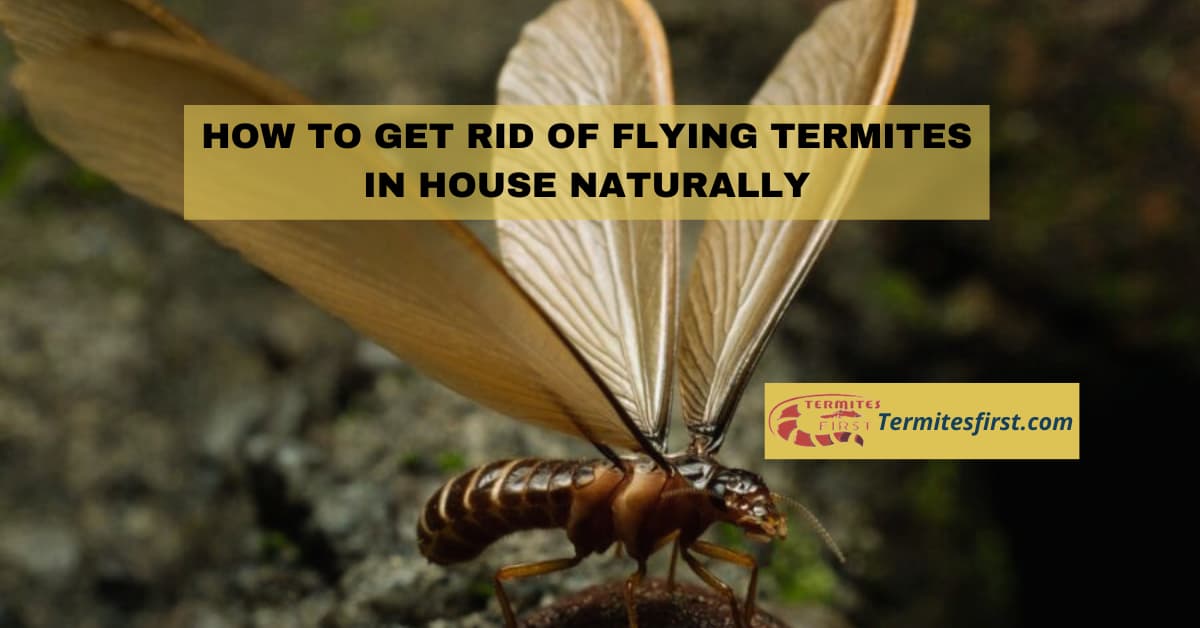
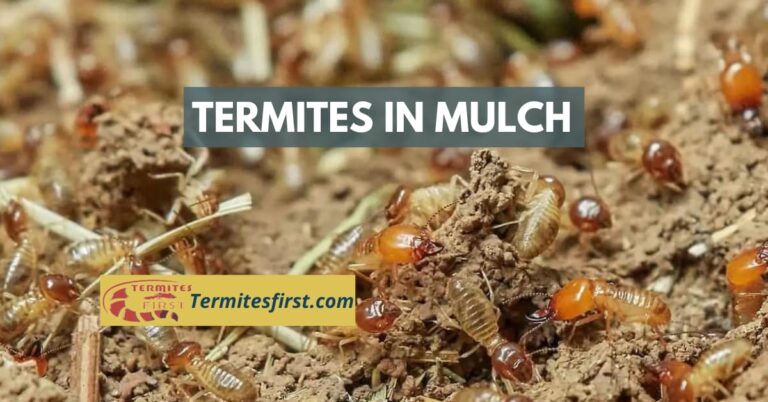
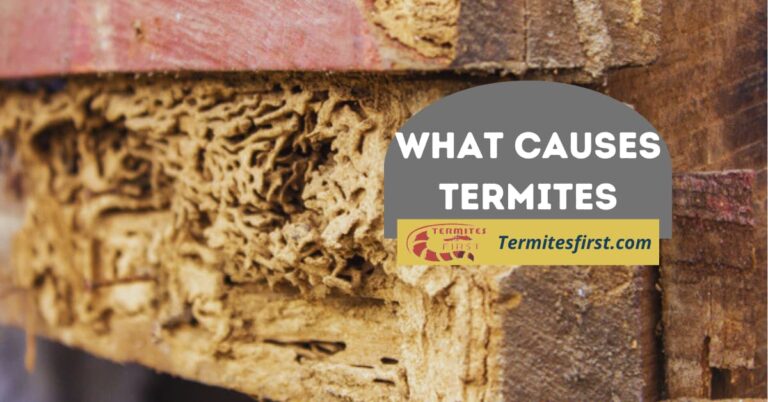



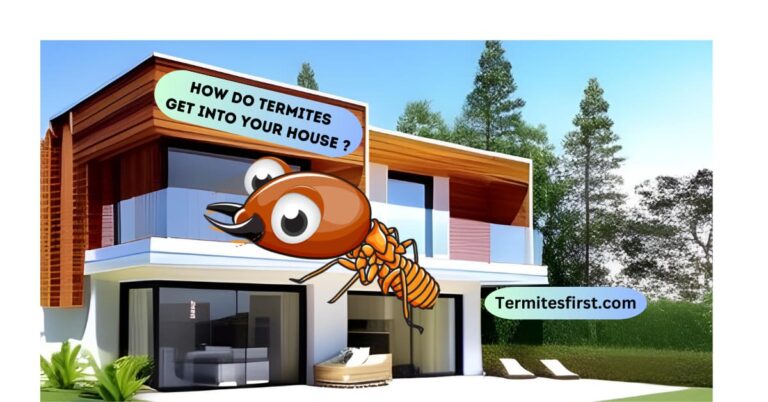
One Comment